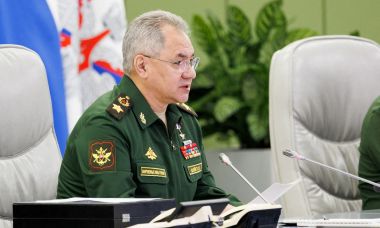Bộ trưởng Quốc phòng Nga’s Plans to Boost Military Presence in Response to NATO Threats
In a recent statement, Russian Defense Minister Sergey Shoigu unveiled plans to strengthen the country’s military forces in the western region as a response to perceived threats from NATO. This decision comes in the wake of Finland’s accession to the alliance, a move that has raised concerns in Russia.
Allegations of Western Aggression and Support to Ukraine
During his address, Shoigu accused the Western countries, collectively referred to as the West, of waging a campaign against Russia. He highlighted the unprecedented support given to Ukraine, including the provision of weapons worth billions of dollars, as evidence of this aggression. According to him, substantial military aid from the West has significantly boosted Ukraine’s capabilities to resist Russia.
Consequences of Finland and Sweden Joining NATO
Shoigu expressed deep concern over Finland’s recent NATO membership and Sweden’s imminent accession. He labeled these actions as serious destabilizing factors in the region. The Defense Minister predicted that NATO would deploy additional forces and deploy crucial weaponry in Finland, potentially posing a threat to the northwestern areas of Russia.
Russia’s Response: Strengthening Military Presence and Forming New Military Districts
To counter these perceived threats, Shoigu announced Russia’s intention to enhance its military preparedness along its western border. The Defense Minister stated that Russia would consider establishing military districts in Leningrad and Moscow as a strategic response to the changing security landscape. In addition, he emphasized the need to reinforce troop groups along the western border to effectively address and neutralize potential security risks.
Poland’s Role and Allegations of US Influence
Shoigu also took the opportunity to criticize Poland’s plans to build a formidable continental super army. He accused Poland of aligning with the United States and becoming a key instrument in the US’s anti-Russia policy. This criticism further underscores Russia’s concerns regarding NATO’s growing presence and influence in the region.
Increased NATO Military Presence in Eastern Europe
Shoigu pointed out that NATO’s military presence in Eastern Europe has already significantly increased since February 2022. He revealed that the number of NATO military units stationed in the region has multiplied by 2.5 times, currently reaching a total of approximately 30,000 troops. This surge in troops from external NATO countries heightens Russia’s perceived security threats and necessitates an urgent and comprehensive response.
Finland and Sweden’s NATO Applications
Finland and Sweden have recently filed applications to join NATO, marking a significant shift in their long-standing policy of military non-alignment. Shoigu highlighted that Finland has already received support from all 30 NATO member states and officially became a member in April. However, Sweden’s approval is still pending, awaiting the final consent of Turkey and Hungary.
In light of these developments, Shoigu emphasized the importance of swift and comprehensive responses to these perceived threats and called for proactive measures to safeguard Russia’s security and national interests.


